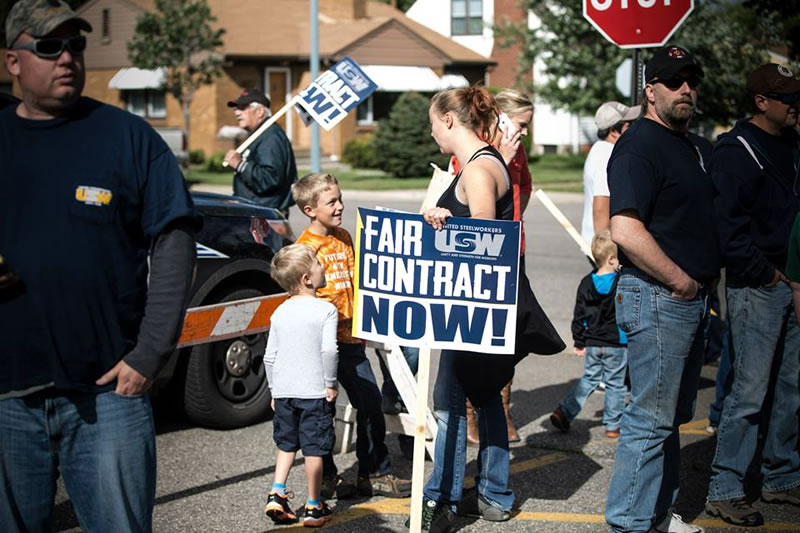

Share
We know already that the prosperity of workers is closely tied to that of labor unions. As the number of unionized hardworking men and women has decreased in our country, we’ve seen the middle class eroded.
New research supports just how closely those two trends are linked.
Richard Freeman at the National Bureau of Economic Research, Eunice Han at Wellesley College, and David Madland and Brendan V. Duke at the Center for American Progress have compiled a paper that shows that “parents’ unionism has a significant relationship with their offspring’s well-being.”
The information could help unions highlight the benefits that a voice on the job gives to working people.
According to the researchers’ findings in the paper, “a strong union movement is not simply sufficient for high levels of intergenerational mobility and middle-class membership, but it could be necessary.”
Based on these statements, it is harder to improve the lives of children in poorer economic situations when unions are weakened. Strong unions or organizations that improve conditions for workers help give families the opportunity to get out of poverty and rebuild the middle class.
Below are three strong correlations between union membership of parents and their children’s long-term advancement, as laid out by Yahoo.com:
- The fall in union membership has correlated with a shift of workers from the middle to the lower class. According to the researchers analysis, the number of Americans who are in the middle class, which they define as within 50 percent above or below the median income, has shrunk along with union membership, with many dropping to the low-income group. ”The decline of unionism appears to have contributed to the shrinkage of the middle-income group of the workforce and the increasing proportion of the lower income group, with a noticeable but not huge magnitude commensurate with unions’ declining role in the U.S. labor market,” said the report.
- Children with parents in a union end up better off than children with parents outside of a union. Using Panel Study of Income Dynamics, or PSID figures, the researchers were able to track both parents’ and their children’s union status, educational attainment, income, and health status. In all categories, the researchers found that children with unionized parents end up with better earnings, higher educational attainment and fewer health issues than those without.
- Children living in areas with higher rates of unionization, regardless of whether their parents are unionized, end up better off. The researchers explain that some of the changes that unions fight for create a spillover effect for non-unionized families. “Unions generally advocate policies that benefit workers, such as raising minimum wages, increasing education spending, and improving public services, so that the effect of unionism may show up in higher incomes for all children from the area regardless of the union status of their parents,” said the study.
These findings are simply correlations, and require more testing, but the strength of these connections show that increasing union membership is one viable solution to combating economic inequality.
This article is reprinted from the United Food & Commercial Workers’ blog.

